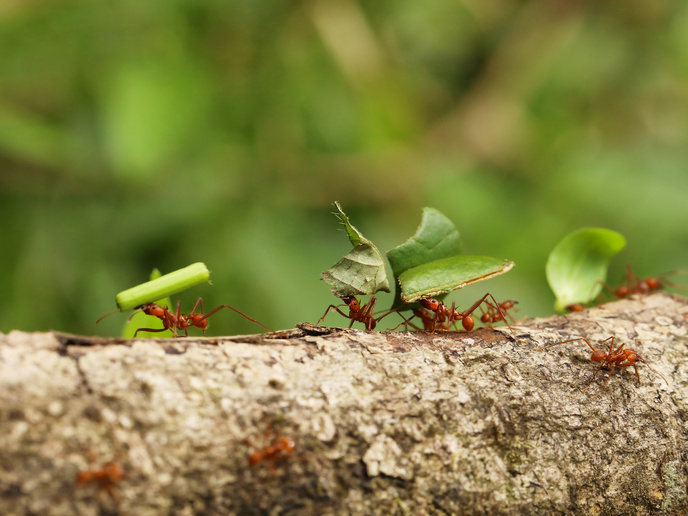How symbiotic bacteria have helped beetles thrive
Most animals live in symbiosis with microorganisms, an arrangement that is very often important for the host’s well-being. For example, the human gut microbiome is a symbiotic system where bacteria benefit from a conducive environment (ideal temperature, supply of nutrients, etc.), while humans receive help with digestion and nutrient uptake. In beetles, recent studies indicate that microbial symbionts supply aromatic amino acids (especially tyrosine precursors) that boost a beetle’s protection against predators, pathogens and desiccation. As a central metabolite, alongside being a component of proteins, tyrosine is important for the melanisation (tanning) and sclerotisation (hardening) of insects’ protective body armour, the cuticle. “But we still didn’t understand how wide-ranging such tyrosine-provisioning symbioses are, their ecological relevance, their evolutionary history or the molecular regulation,” notes Martin Kaltenpoth, project coordinator of the SYMBeetle project, which was funded by the European Research Council. SYMBeetle demonstrated that tyrosine is provided by bacterial symbionts across multiple beetle families, and shed light on their evolutionary histories. “It was exciting to learn that many different beetles independently acquired microbial symbionts as a source of this one key metabolite, tyrosine,” adds Kaltenpoth.
Characterising tyrosine-supplementing symbioses
The team conducted phylogenomic studies (for both beetles and symbionts) to unravel the evolutionary histories of tyrosine-supplementing bacteria across five different beetle families. The studies showed that these symbionts can persist over long evolutionary timescales (hundreds of millions of years) but can also get lost or replaced by other symbionts. “The repeated acquisitions of tyrosine-supplementing symbionts show that they are very important for many herbivorous beetles. But as other herbivorous beetles function well without them, we need more research to identify the ecological drivers that determine symbiont distribution,” notes Kaltenpoth. Another discovery was that the tyrosine-supplementing symbioses can be disrupted by the widely used herbicide ‘glyphosate’. Targeting the ‘shikimate’ pathway, the herbicide inhibits an enzyme responsible for the production of aromatic amino acids in plants and microbes. “Considering how widespread this pathway is amongst insect symbionts, many different insects could be susceptible to glyphosate,” adds Kaltenpoth. The digestive advantages that bacterial symbionts confer on the megadiverse leaf beetle family were also characterised by genomically analysing the beetles’ ability to produce digestive enzymes that break down the plant’s cell wall. The results clearly showed these enzymes had been shaped in leaf beetles through repeated exposure to the symbionts, as well as horizontal gene transfer from bacteria and fungi of the genes for encoding these enzymes. Another key discovery was of a novel intracellular symbiont in multiple beetle families and other insect orders. Just like the tyrosine-provisioning and digestive symbionts, this bacterium (dubbed ‘Symbiodolus’ by the team) is passed on by mothers to their offspring, but it also appears to successfully colonise new hosts, with unknown consequences for their fitness. “We were astonished by repeatedly finding very similar bacterial sequences across many different insects, leading to this discovery,” notes Kaltenpoth.
Medical and agricultural implications
Unravelling the function, ecological relevance and evolutionary histories of beetle-bacteria symbioses reveals much about the diversification of one of the most successful groups of organisms on the planet. Better understanding the molecular basis and regulation of host-symbiont interactions also provides insights that could be applicable to medicine and agriculture. Meanwhile, the team’s glyphosate experiments serve as a warning that its use may contribute to the decline of insect populations.
Keywords
SYMBeetle, microbial, bacteria, cuticle, beetle, insect, symbioses, symbiont, tyrosine, herbicide, glyphosate






